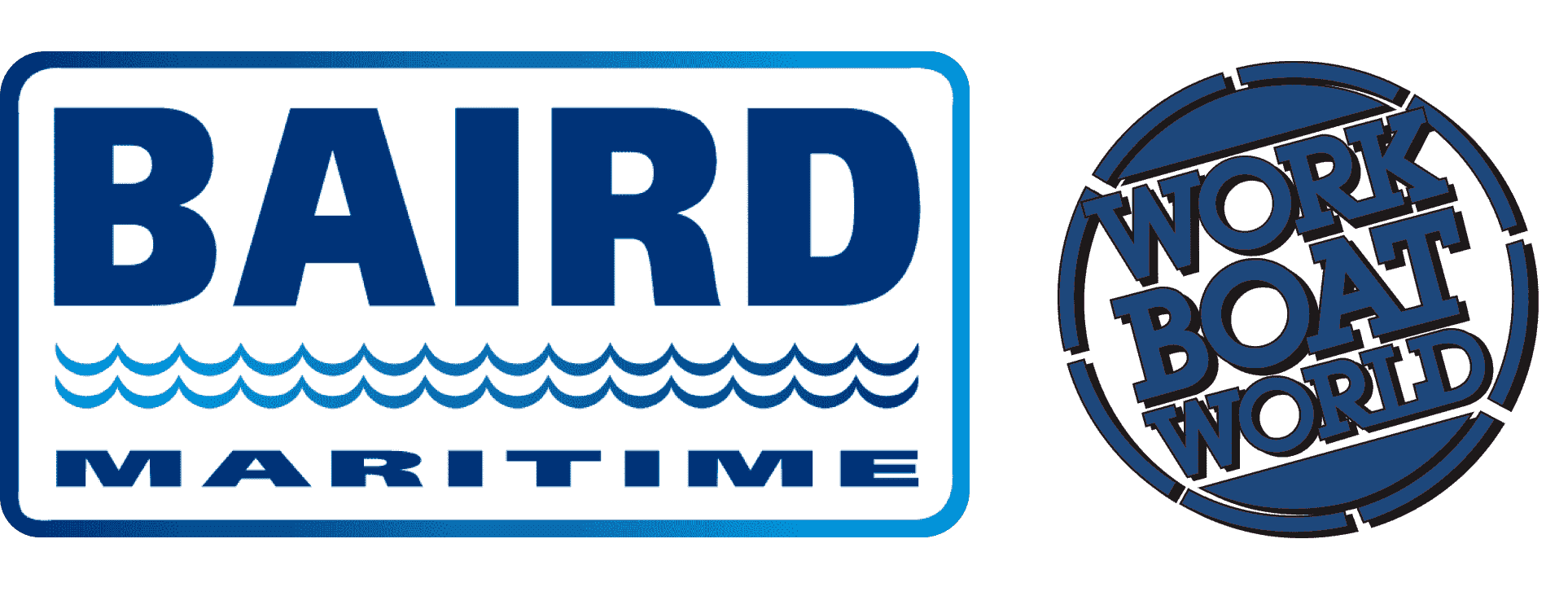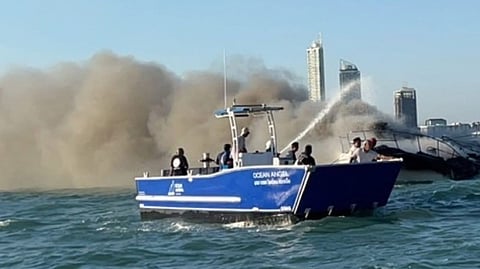AWARDS 2024 | Best SAR Landing Craft – Ocean Angel – SeaCat Ships
These small, fast aluminium landing craft are very impressively versatile. Simple and rugged, they can be fitted with single or dual outboard motors, either petrol or diesel.
They can be fitted with various forms of seating or left mostly open to facilitate carrying a large SUV-style motor vehicle. They are almost infinitely adaptable.
Hulls are deep V forward and fairly flat aft making them economical and low wash. Their sun awnings are easily demountable making the boats easy and cheap to ship.
"She stands out as a truly versatile and innovative rescue/workboat, designed to handle a wide range of critical marine operations," Paul Birgan, Director and Design Manager at SeaCat Ships, told Baird Maritime.
"Its multi-functional capabilities make it an invaluable asset for Ocean Marina, excelling in areas such as assisting vessels facing mechanical issues; firefighting and emergency response; facilitating black water tank pump-outs to maintain marina cleanliness; supporting the maintenance of port and starboard navigational marks; and use in beach clean-ups and other community events."
"Built from heavy-duty aluminium plate, Ocean Angel meets Australian NSCV Class 2C standards. It is also the ninth vessel of its kind produced by SeaCat Ships.
Powered by twin four-stroke outboard engines, it reaches speeds of up to 32 knots, offering both speed and stability.
"Since its launch, Ocean Angel has already carried out numerous rescues, firefighting operations, and towing activities, proving its exceptional performance in real-world scenarios," added Birgan.
One of the key considerations during the design and construction was ensuring that the boat could handle multiple demanding tasks without compromising speed, stability, or efficiency.
"Designing a vessel that could seamlessly transition between roles required careful weight distribution, specialised equipment integration, and a robust hull structure," said Birgan.
"We optimised the layout in conjunction with Ocean Marina Harbour Master Scott Finsten to balance firefighting systems, towing capability, and manoeuvrability."
Given the demanding nature of rescue and workboat operations, SeaCat Ships reinforced the vessel's structural elements to withstand heavy use while maintaining a lightweight, high-performance profile.
Also, ensuring the twin outboards provided sufficient thrust without excessive fuel consumption required fine-tuning of the propulsion system.
"While we meticulously designed the vessel on paper, in-water trials allowed us to fine-tune its handling and performance further," Birgan remarked. "Some equipment placements were adjusted post-construction based on operator feedback, reinforcing the importance of flexibility in design."
For Birgan, the work on Ocean Angel underscored the value of modular systems that can be upgraded as technology advances.
"Overall, she exceeded expectations, and the insights gained will shape our future rescue and workboat designs for even greater efficiency and durability."
Birgan believes naval architecture is increasingly being influenced by sustainability and efficiency-driven trends, with a number of key regulations shaping vessel design.
"The push for reduced emissions has led to the rise of hybrid-electric and alternative fuel propulsion systems, with naval architects focusing on optimising hull forms to minimise drag and improve fuel efficiency," he told Baird Maritime.
"IMO regulations such as EEXI and CII are driving ship designs that prioritise operational efficiency, such as integrating energy-saving devices like air lubrication systems and advanced hull coatings. Computational fluid dynamics and AI-driven modeling are also becoming standard in optimising hull performance to meet fuel efficiency targets."
In Birgan's view, the maritime emergency services sector is evolving rapidly, with several key trends shaping its future. For instance, fire and rescue vessels are moving towards hybrid and fully electric options to reduce emissions while maintaining operational efficiency.
"AI and remote operation technology will improve response times and safety in hazardous conditions. Additionally, future emergency vessels will be designed for versatility, combining firefighting, medical response, and environmental protection in a single platform."
Birgan expects the South-East Asian workboat industry will continue to grow as the market demand for durable multi-role workboats increases. With increasing maritime infrastructure projects, workboats will need to handle towing, maintenance, and emergency operations efficiently.
"Low-emission propulsion systems, including hybrid and LNG-powered workboats, will become more prevalent, while growth in offshore wind, aquaculture, and port operations will drive demand for specialised vessels.
"Overall, the future of the maritime industry is focused on sustainability, efficiency, and technology-driven innovation, and we are excited to be at the forefront of these changes," Birgan told Baird Maritime.
For a list of the 2024 "Best Of" award winners, please click here.




